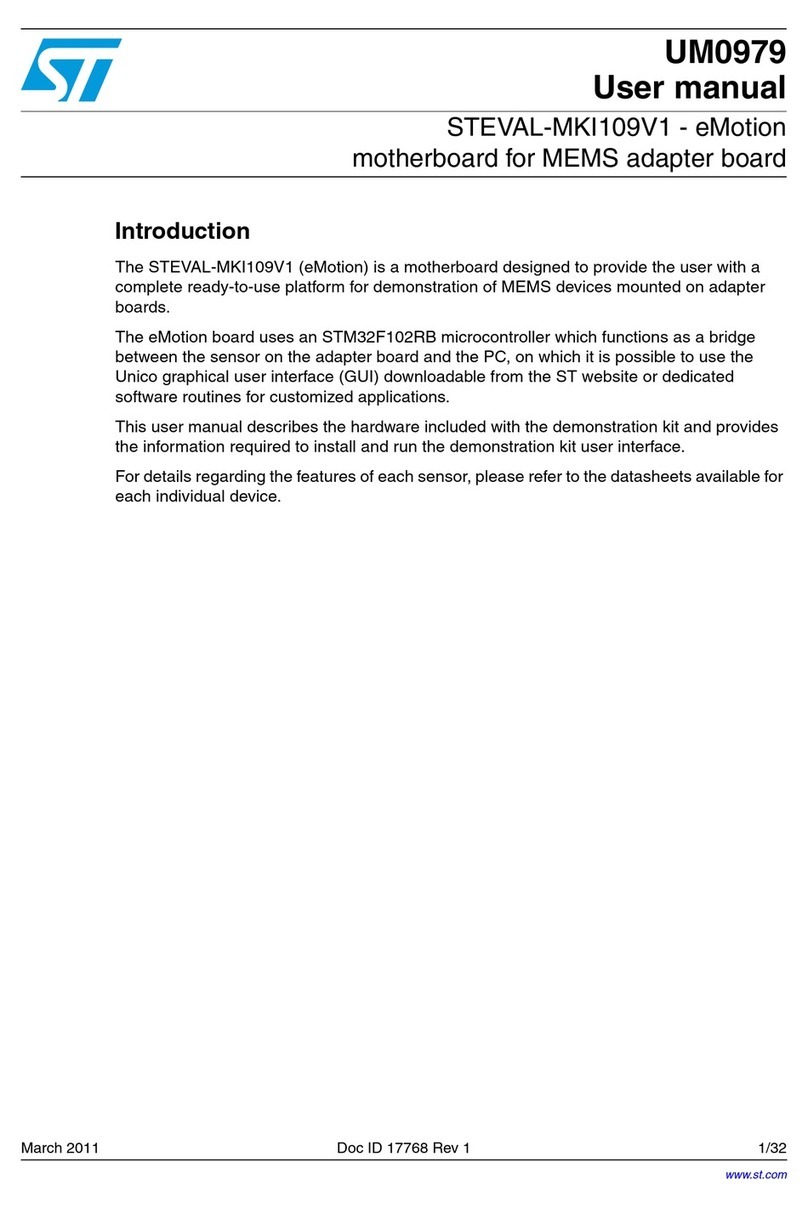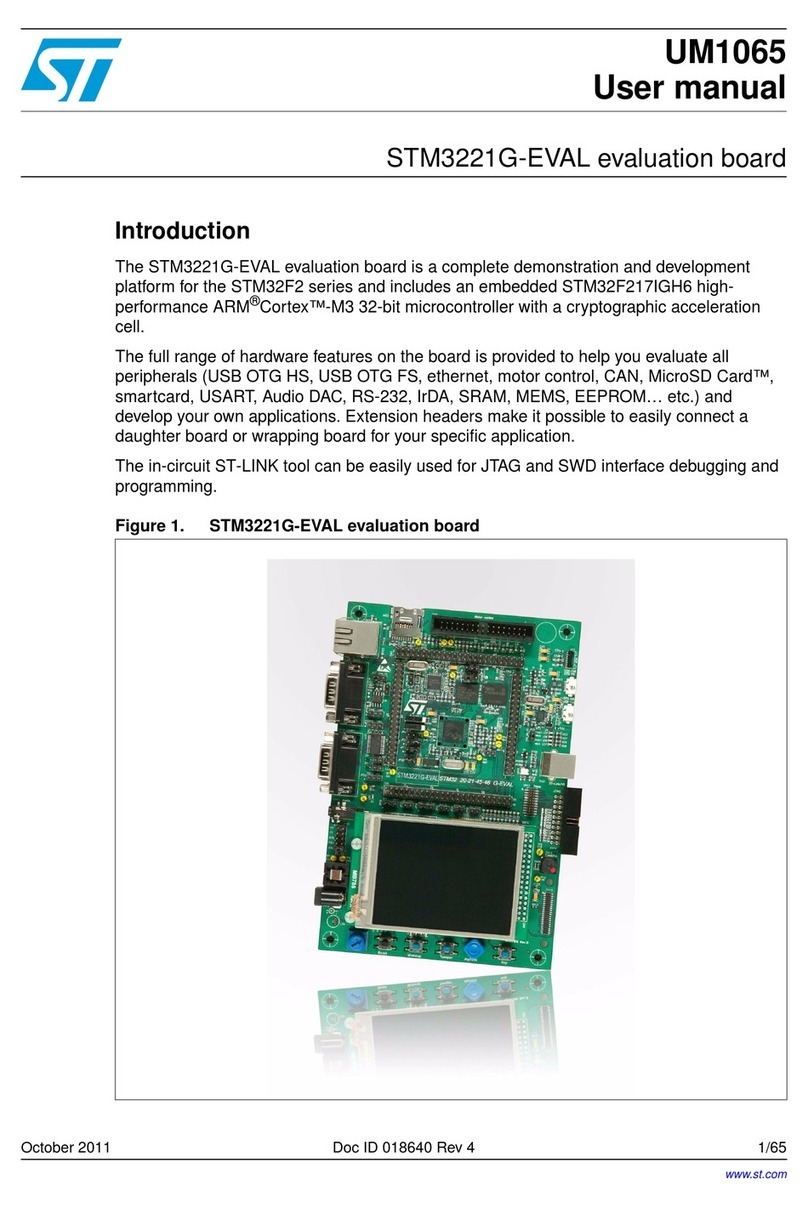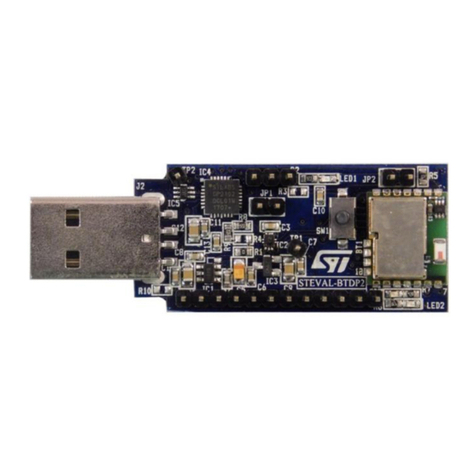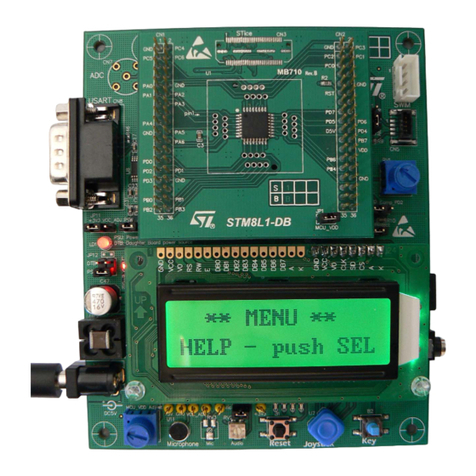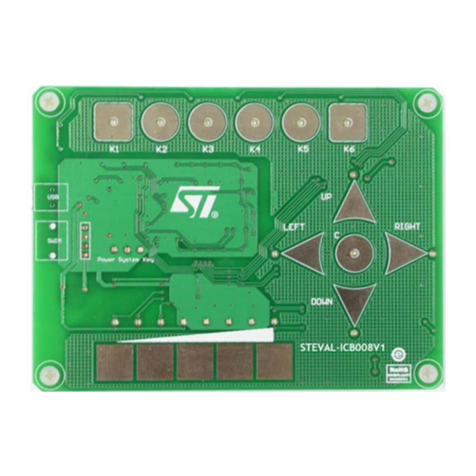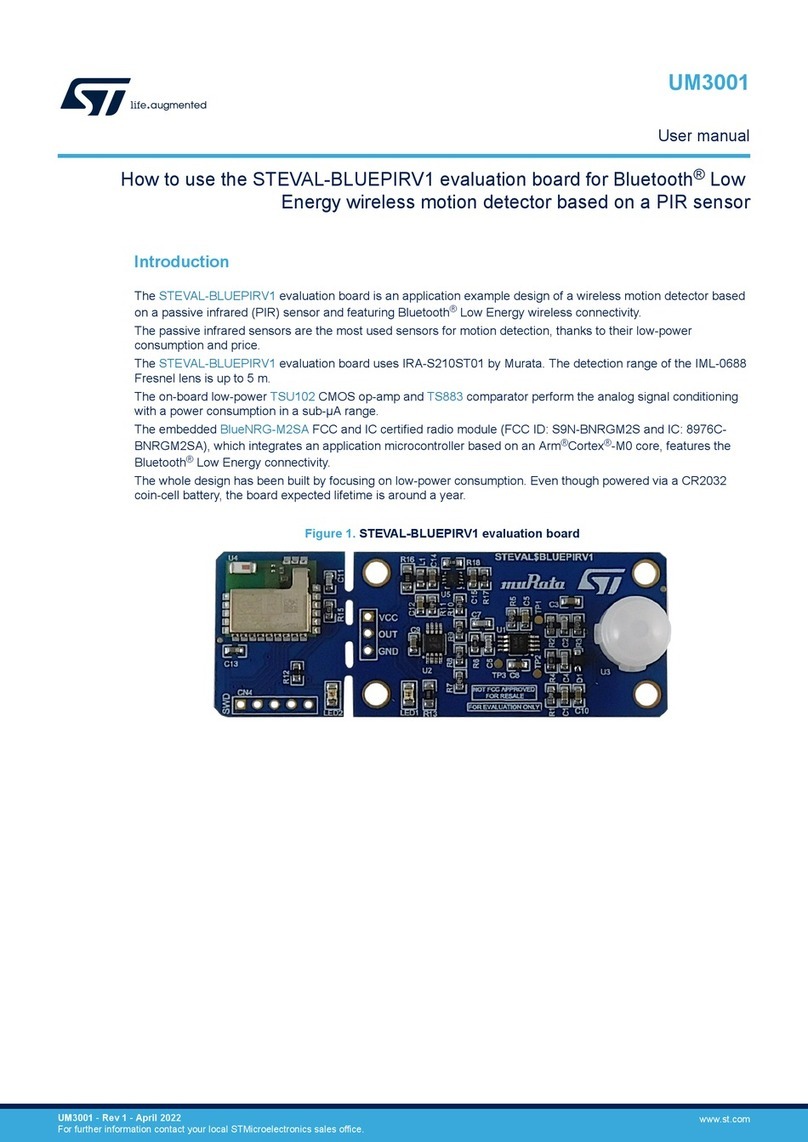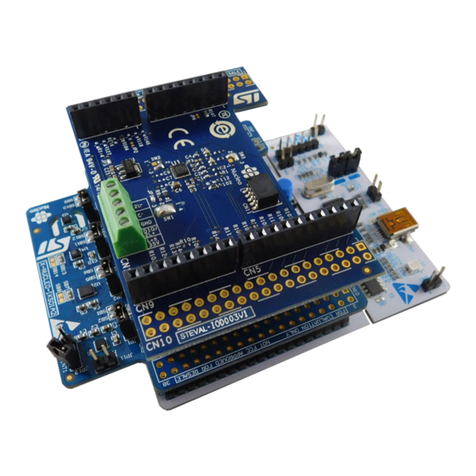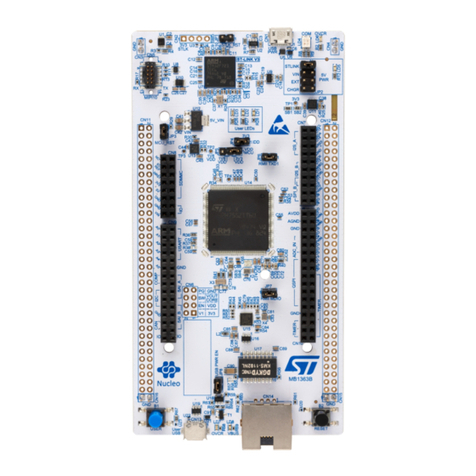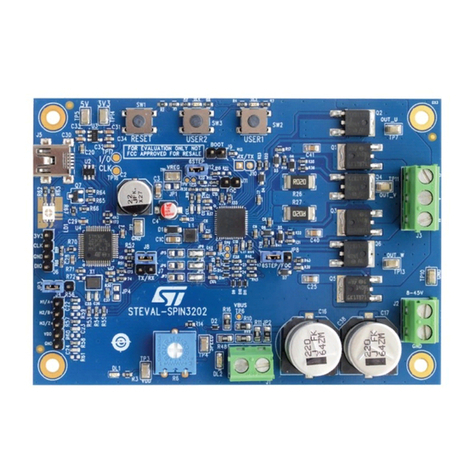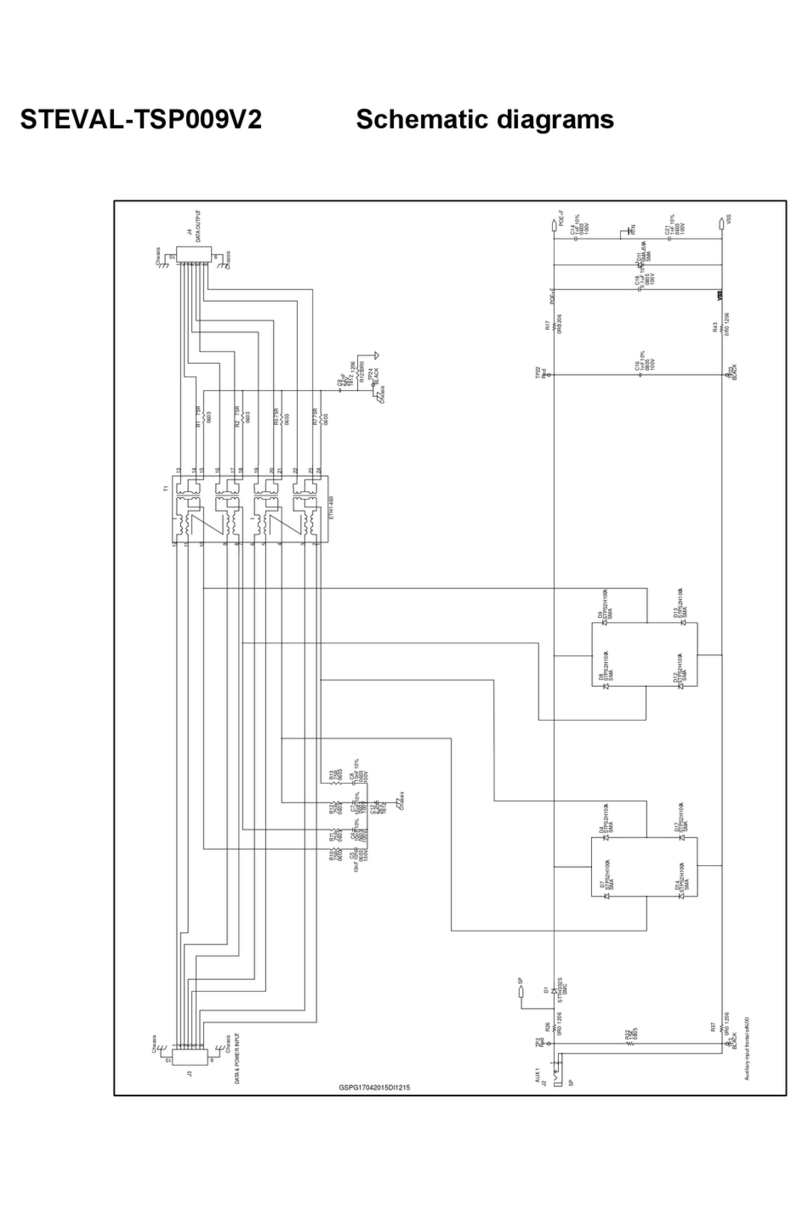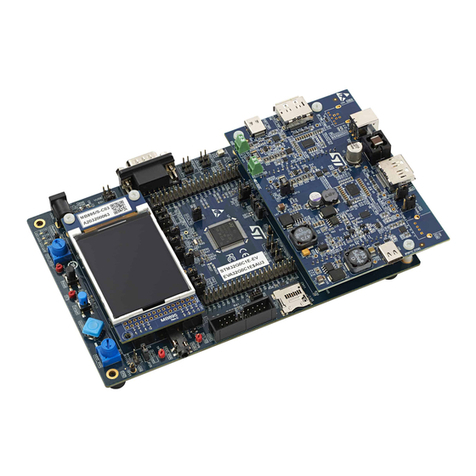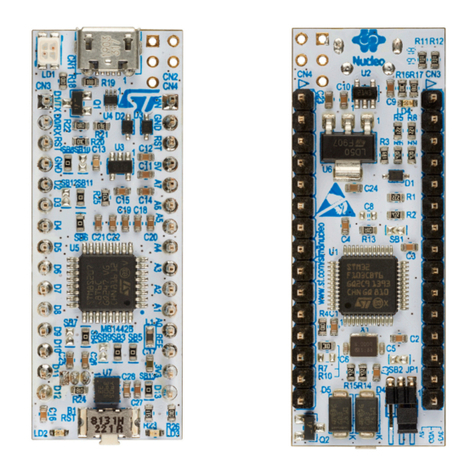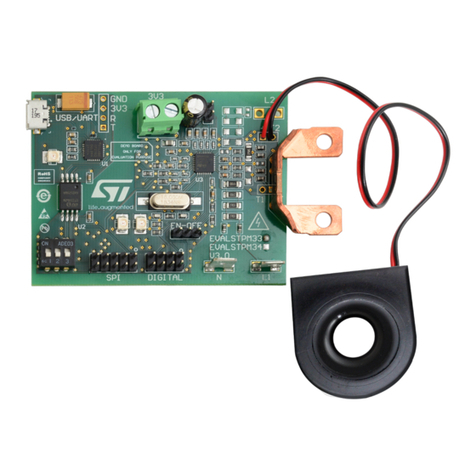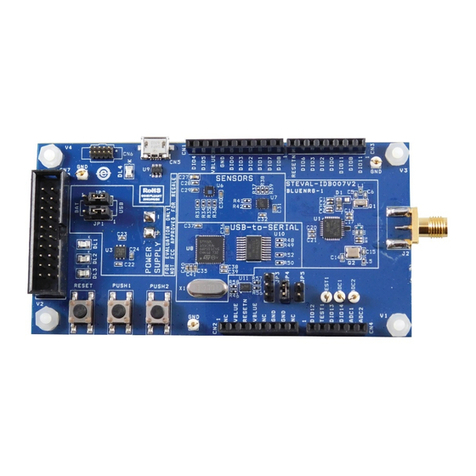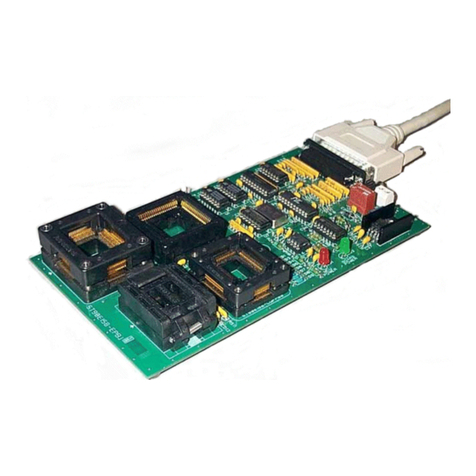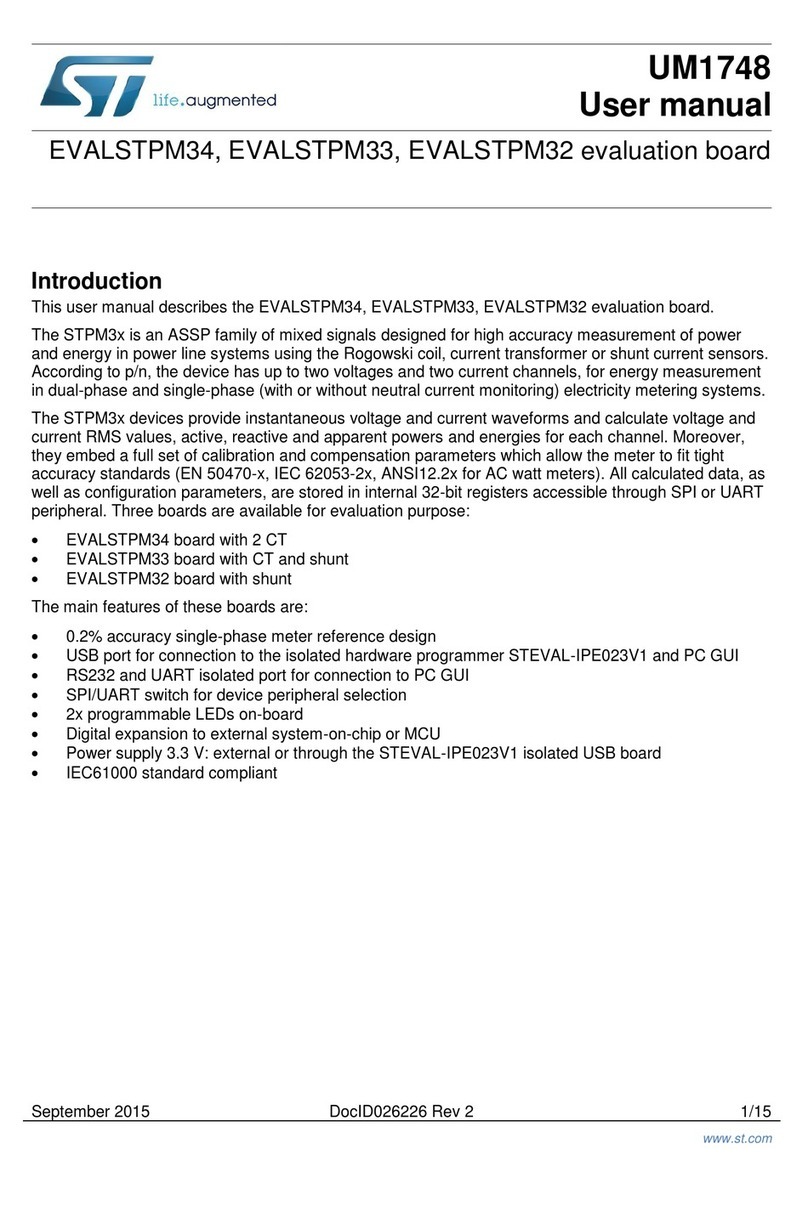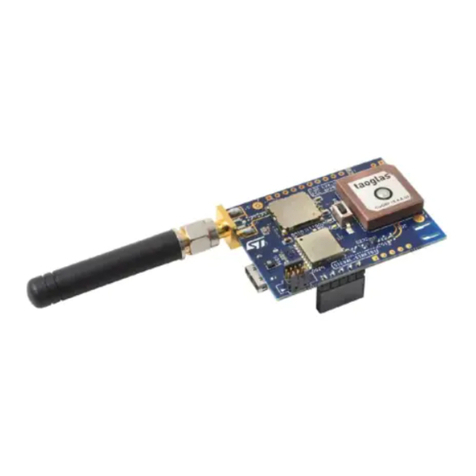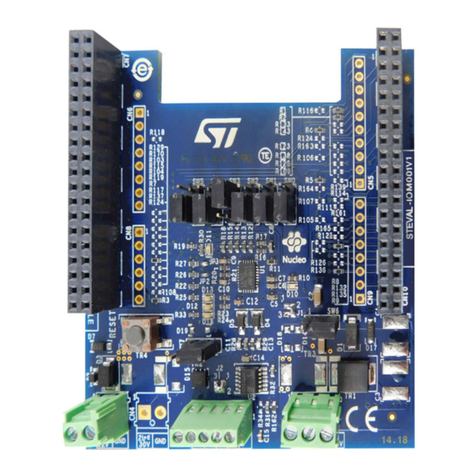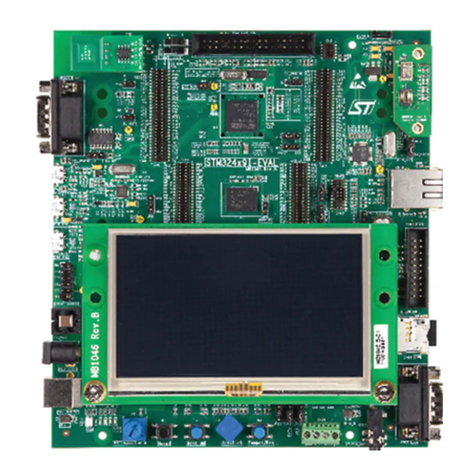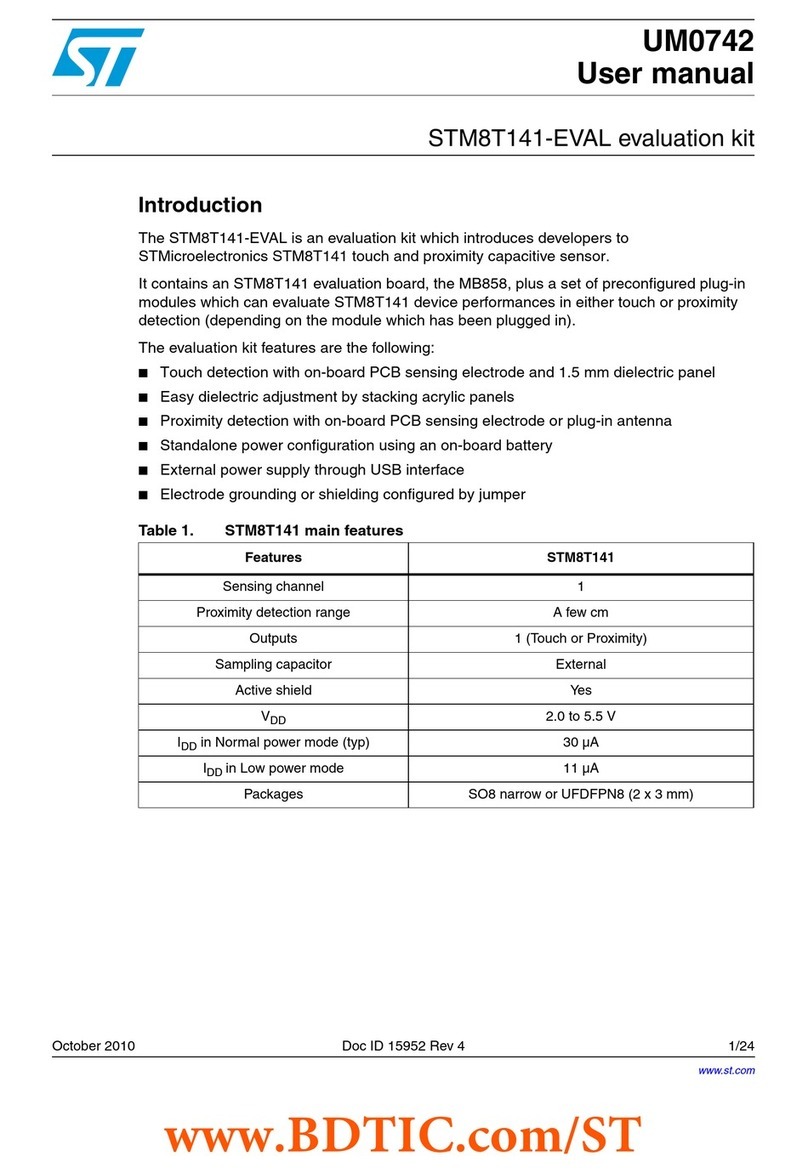List of figures
Figure 1: STEVAL-USBPD45H evaluation board.......................................................................................1
Figure 2: Power board schematic diagram.................................................................................................6
Figure 3: Control board schematic diagram ...............................................................................................9
Figure 4: Flyback transformer...................................................................................................................12
Figure 5: Power board PCB layout (top)...................................................................................................14
Figure 6: Power board PCB layout (bottom).............................................................................................14
Figure 7: Control board PCB layout (top) .................................................................................................14
Figure 8: Control board PCB layout (bottom) ...........................................................................................15
Figure 9: P-NUCLEO-USB002 STM32 Nucleo Pack for USB Type-C expansion ...................................17
Figure 10: P-NUCLEO-USB002 Nucleo Pack with USB1602 Expansion Board .....................................18
Figure 11: Setting up the complete testing environment..........................................................................19
Figure 12: STUSB graphical user interface tool .......................................................................................21
Figure 13: Efficiency measurement at 120 VAC line voltage.....................................................................23
Figure 14: Efficiency measurement at 230 VAC line voltage.....................................................................24
Figure 15: Output voltage transition 5 V to 15 V - no load .......................................................................25
Figure 16: Output voltage transition 5 V to 15 V - full load.......................................................................26
Figure 17: Positive voltage transition........................................................................................................26
Figure 18: Output voltage transition 15 V to 5 V - no load .......................................................................27
Figure 19: Output voltage transition 15 V to 5 V - full load.......................................................................27
Figure 20: Negative voltage transition ......................................................................................................28
Figure 21: EMI results at full load (45 W), 120 VAC...................................................................................29
Figure 22: EMI results at half load (22.5 W), 120 VAC ..............................................................................30
Figure 23: Thermal map at full load..........................................................................................................31
